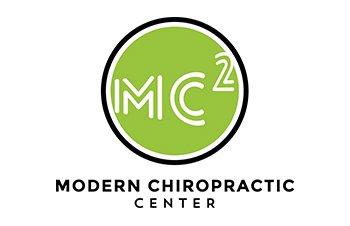What is causing my hunchback and can it be fixed?
Hunching or rounding of the back is something many people know of, have seen in others or experience in themselves. This “hunching” is a spinal deformity called hyperkyphosis and occurs when the thoracic spine (middle back) curves forward excessively. According to the Scoliosis Research Society, a normal thoracic spine should have a forward curve or kyphosis of 20-45 degrees. The thoracic spine is considered to have hyperkyphosis if this curvature exceeds a measurement of 50 degrees. Hyperkyphosis can form at any age and is associated with a variety of health issues including back pain, neck pain, degenerative disc disease, stiffness, impaired gait, loss of balance, height loss, gastric hernias, acid reflux, reduced lung capacity, and a reduction in life expectancy.
Determining the Type of Hyperkyphosis
Multiple types of hyperkyphosis exist. A thorough examination including x-rays that are taken and evaluated by a health professional who truly understands the difference in the types of hyperkyphosis is essential in determining the type, severity and treatment options available for each individual. The two main types of hyperkyphosis are postural kyphosis and structural kyphosis.
Postural Kyphosis: Postural kyphosis occurs as a result of poor posture from excessive slouching when standing or sitting and weakening of the muscles and ligaments in and around the spine. Individuals with postural kyphosis tend to have thoracic spines that are more flexible than those of other types. However, the single most important feature of postural kyphosis that differentiates this type from others is the shape of each thoracic spine vertebral body (bone of the spine). Individuals with postural kyphosis will not have any structural abnormalities of the vertebral bodies as seen on x-ray.
Structural Kyphosis: Structural kyphosis differs from postural kyphosis in that the shape of one or more thoracic vertebral bodies do in fact contain structural abnormalities. A normal vertebral body is cylindrical in shape. The abnormality that occurs in structural kyphosis is one or more wedge shaped vertebra in the thoracic spine. A vertebra is considered “wedge shaped” when the front of the vertebral body is significantly shorter than the back of the vertebral body, causing the spine to tilt forward. There are a variety of factors that can cause a spinal bone to become wedge shaped; therefore, there are multiple types of structural kyphosis. Structural kyphosis can be broken down into four subcategories: congenital kyphosis, Scheuermann’s kyphosis, post-traumatic kyphosis, and secondary kyphosis.
- Congenital Kyphosis: Congenital kyphosis is thoracic hyperkyphosis that is present from birth due to improper development of the spine. An individual with congenital kyphosis is born with one or more wedge shaped vertebra in the thoracic spine.
- Scheuermann’s Kyphosis: Scheuermann’s kyphosis occurs when three adjacent thoracic vertebral bodies become wedge shaped. This develops in adolescents during growth. The cause of Scheuermann’s kyphosis is unknown.
- Post-Traumatic Kyphosis: Post-traumatic kyphosis occurs when one or more vertebral bodies become wedge shaped due to compression fracture(s) resulting from injury.
- Secondary Structural Kyphosis: Secondary structural kyphosis occurs when one or more thoracic vertebral bodies become wedge shaped resulting from an existing spine condition that softens, weakens or destroys the bones of the spine. Some of the most common conditions of the spine that can cause secondary structural kyphosis are osteoporosis, tumors, infections, and long-standing untreated postural kyphosis.
Treatment for Thoracic Hyperkyphosis:
There are a variety of treatment options for patients with hyperkyphosis. Patients with severe congenital kyphosis, significant post-traumatic kyphosis or secondary structural kyphosis caused by tumors or infections may require surgical intervention. However, a majority of hyperkyphosis cases can be treated through conservative non-surgical treatment. At Modern Chiropractic Center we use a combination of proven chiropractic methods as researched in Chiropractic Biophysics technique as well as bracing with ScoliCare products to successfully manage hyperkyphosis non-surgically.
Below is a recent patient at Modern Chiropractic Center who underwent two months of care utilizing Chiropractic Biophysics technique. Kyphosis measured on initial x-ray (left) was 58.3 degrees. Kyphosis measured on the second x-ray (right) is 41.1 degrees. This measures to a 17.2 degree reduction in this patients hyperkyphosis after two months of care.

Our goal at Modern Chiropractic Center is to provide cutting edge, research-based care so that patients have the best chance of living with less pain, improved posture, and a healthy spinal structure. Call any of our offices today to schedule a spinal evaluation.






